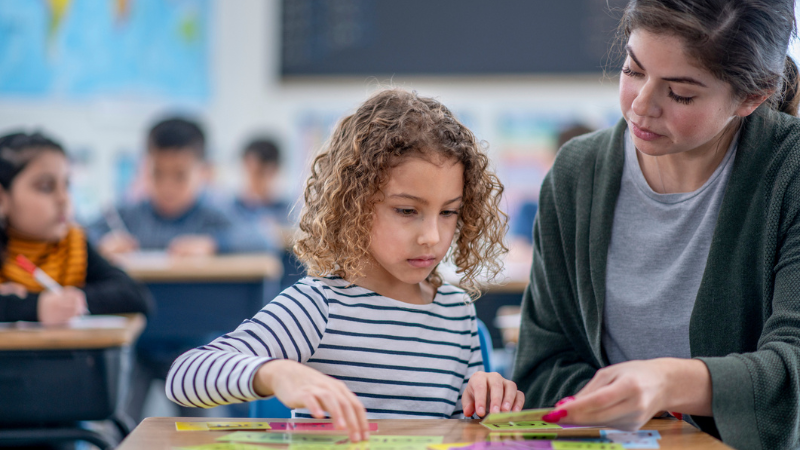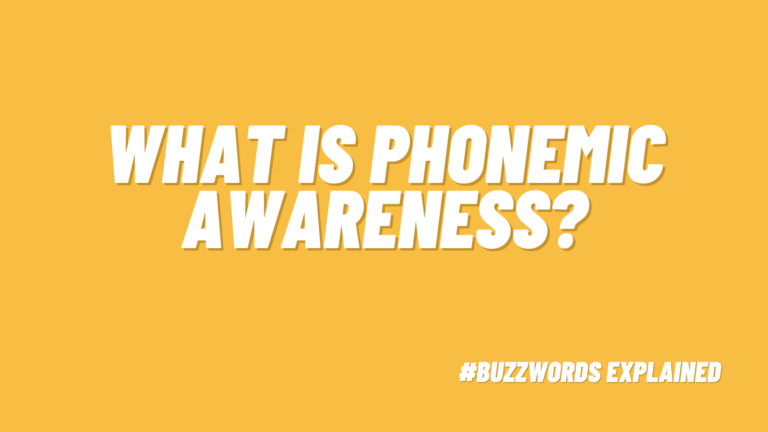Students who struggle with learning to read really stick with us. It’s easy to picture each of their little faces, wrinkled in concentration, trying to make sense of words on a page. We share their frustration when it feels like they should be able to “get it” but they don’t.
Educating ourselves about why learning to read is so complex—and, therefore, often difficult—can help us as teachers respect the intense work kids must do to achieve reading proficiency. This education also empowers us to identify and deliver high-quality reading instruction to give students the best opportunity for success.
Learning to read is different than learning to talk.
Most children move from babbling as babies to speaking in sentences in just a few years. All kids, unless they have a neurological or hearing impairment, will learn to talk. The human brain is hard-wired for oral language. Children learn to speak naturally from incidental exposure, like chatting with caregivers and hearing family conversations around them.
While talking is natural, reading is not. The human brain must acquire reading and writing skills through explicit instruction. For most students, it takes several years of teaching before they learn to read, and many more years to master sophisticated reading comprehension and academic language. Effective literacy instruction matters. Our brains aren’t wired to learn to read and write without it.
What happens in the reading brain?
To read a word, the brain must first recognize the letters on the page. Then it must connect those letters to spoken sounds, and connect that set of spoken sounds to meaning. The brain also has to make sense of the word in context. For proficient readers, all this happens within milliseconds.
There’s no one “reading center” in the brain that does this work, but rather multiple brain areas and systems working in concert. Much of what we know about how different parts of the brain work together during reading comes from the brain-imaging studies of cognitive neuroscientist Stanislas Dehaene. These imaging studies show how different areas of the brain “light up” as a reader looks at a word, connects its letters to spoken sounds, and considers its meaning.
What about reading difficulties?
Understanding the variety of brain activity involved in reading can also help us understand different types of reading difficulties, including dyslexia. Trouble processing spoken sounds, written symbols, or word meanings all impact kids’ reading differently—and often can compound on one another. Effective intervention has the power to “retrain” the reading brain to help kids with reading difficulties succeed.
What actually works for kids who are learning to read?
It makes complete sense why Louisa Moats, acclaimed literacy researcher and developer of Lexia LETRS, says, “Teaching reading is rocket science.” The best reading instruction builds connections between the areas of the brain and systems involved in reading by helping kids connect letters and spoken sounds, as well as growing their knowledge of word meanings and concepts. Keeping these three principles in mind is a good place to start:
1. Teach letters and sounds systematically.
A key area the brain uses during reading is the “visual word form area.” Stanislas Dehaene dubbed this “the brain’s letter box.” This part of the brain is specially attuned to visual knowledge about words. The best instruction “fills” this letter box with direct, systematic teaching about letters and sounds, followed by continued teaching about recognizing spelling patterns and morphemes—meaningful parts like root words and affixes. Let go of any teaching practices that ask kids to memorize or guess at whole words to read them.
2. Build meaningful connections and knowledge.
Anytime we can help students exercise different processing systems in the brain, we help them build brain connections. Help students recall what they know or have experienced that relates to words they read, then assist them in narrowing down the right context to fit their reading—for instance, if they come across a word with multiple meanings.
Building kids’ knowledge of words and ideas gives the brain reference material to draw upon when processing meaning during reading. Words and ideas take multiple exposures to make their way into kids’ long-term memory storage. Thoughtfully linking content learning with reading instruction—like using text during reading that’s related to a topic they’ve learned about in science and social studies—helps add to those invaluable “mental file folders.”
3. Expect different brains to require different instruction.
Because reading is complex and requires the development of neurological pathways in the brain, budding readers will progress at different rates and have varying difficulties. Therefore, they’ll need differentiated instruction and scaffolded support. Use student data to pinpoint students’ areas of need and let the data drive your instruction. Notice which teaching strategies work well (or don’t) for each student and be prepared to adjust your approach.
Need more help supporting your students who are learning to read? Learn more about Lexia LETRS professional development.


